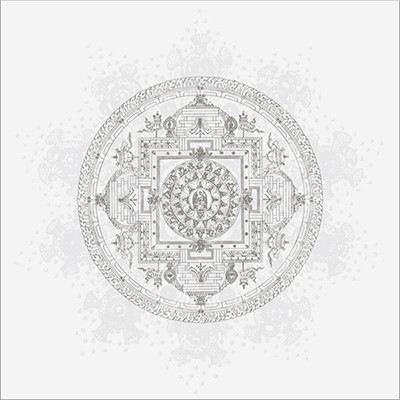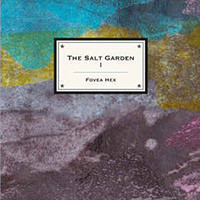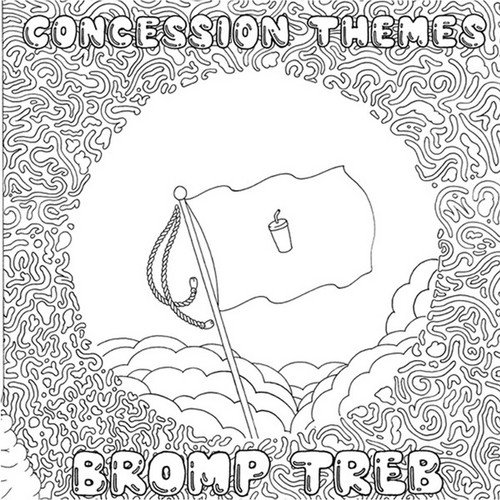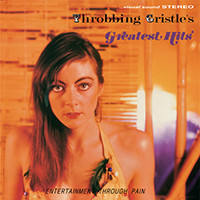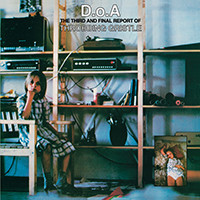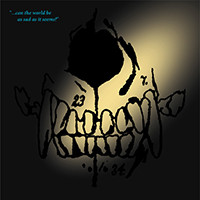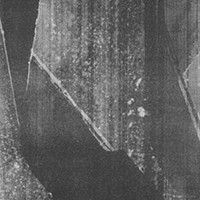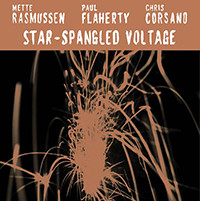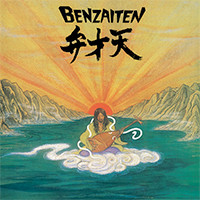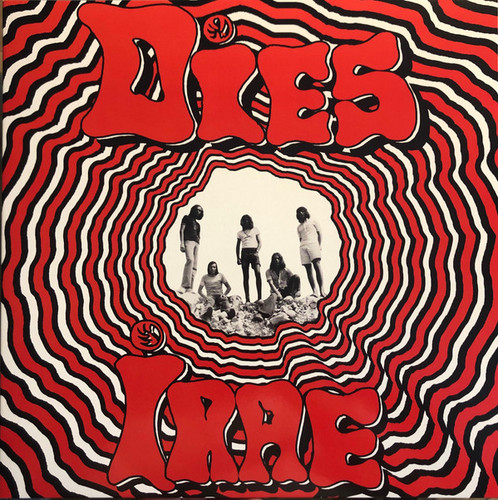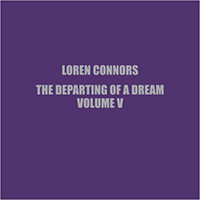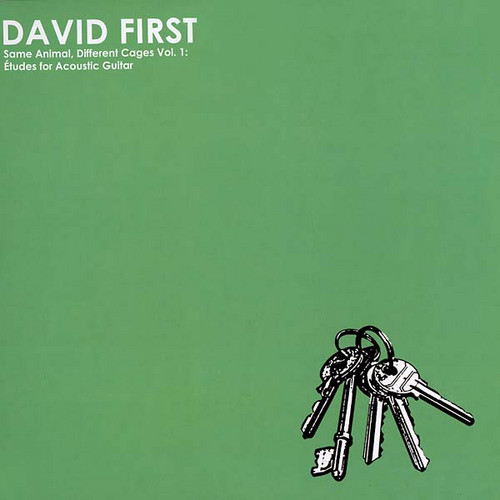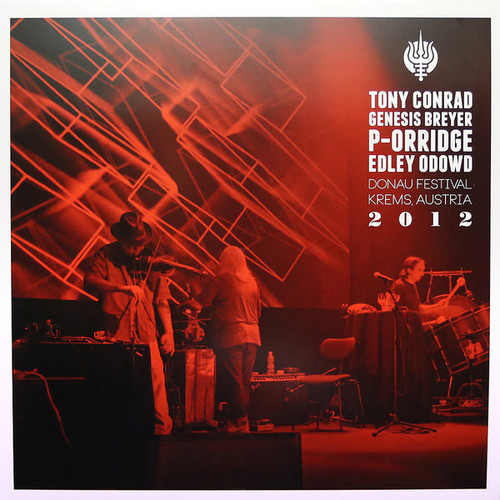I'm The One
Masterpiece!!! I'm The One, you don't have to look any further. I'm The One. I'm here, right here for you,' oozes jazz, rock, and electronic music pioneer Annette Peacock on the leadoff title track of her solo debut LP. The album's wide range of vocal emotions and diverse sonic palette (featuring Robert Moog's early modular synthesizers, which the singer actually transmitted her voice through to wild effect) places it firmly at the forefront of the pop avant-garde. Originally released by R…
Prima Materia
Special 10th anniversary edition & first time available on vinyl. A totally immersive listening experience and a true testament to the power and range of the human voice in all its harmonic splendor, as poignantly stated by Terry Riley in the liner notes: “As is the case with La Monte Young's Theater of Eternal Music, David Hyke's Harmonic Choir and Pauline Oliveros's Deep Listening Band, Roberto Laneri has had a life long penchant for the droning mysteriosa of the Sound …
The Salt Garden I
** special 10"+CD edition** The new EP from Fovea Hex is the first ever non-SW release on the Headphone Dust label, a testament to the unprecedented quality of the work. Steven has long been a fan of Fovea Hex, and in 2008 he invited singer / songwriter Clodagh Simonds to guest on his first solo record Insurgentes. Fovea Hex also counts the likes of David Lynch, Brian Eno and Underworld amongst its fans. You may also recognise Clodagh’s name from her vocals on early Mike Oldfield albums Hergest …
Concession Themes
Most dance music cuts up time like a log saw bearing down on a tied up lady. It’s dramatic and everything, sure. But you can always tell what’s going to happen way ahead of time. What if, instead, you threw all those beats and tempos at the ceiling and then just let the pieces fall wherever? Neil Young Cloaca makes whimsical, jiggling electronics that go from dry to juicy to unintelligible and morph again & again before you even figure them out. He has a pile of mysterious black boxes that wigg…
Throbbing Gristle’s Greatest Hits
2016 repress. If you're new to Throbbing Gristle then, well, shame on you; but don't worry, all's not lost, you can get up to speed with the help of the band's Greatest Hits, newly remastered. First released by Rough Trade in 1980 with the apt subtitle Entertainment Through Pain, it's an unbeatable summary of crucial material from Gen, Chris, Cosey and Sleazy's first three albums (Second Annual Report, DoA: The Third and Final Report and 20 Jazz Funk Greats), taking in the robo-fetish disco of '…
D.o.A. The Third And Final Report Of Throbbing Gristle
2016 repress. Throbbing Gristle's second album, remastered - making for markedly superior sound quality to some previous editions - and reissued on Industrial Records. This finds the band at their sleazy (no pun intended) and savage best, reaching an apogee of apoplectic rage on 'We Hate You (Little Girls)', and has to rank as one of the most brilliant British evocations of decay and dysfunction to appear in any art form, ever. For all the P.Orridge-helmed murk, you feel Chris Carter's presence …
Heathen Earth
2016 repress. Live performance brought out Throbbing Gristle's talents for improvisation and provocation, and it's no coincidence that most of their classic albums contain sizeable extracts and edits of their shows; the live arena - be it grotty club, gallery space, concert hall or even the band's own rehearsal space - is where the action and the innovation really happened. The bulk of Heathen Earth documents one particular performance which took place in 1980 on "Saturday the 16th February betw…
The Water Towers
Razgraad is the brand new solo project by Salvatore Miele, Bologna-based electronic musician and The Water Towers is Razgraad’s very first release. Under this moniker Miele designs sounds in heavily saturated structures, stratifying timbres and combining dissonances and minimal percussions with more melodic sequences. On his debut tape Razgraad investigates cyclicity, drones and rhythmic pulses, declining the sounds of the industrial landscape through the transformation of field recordings and t…
Quando gli Uomini Adoravano la Luna
L'Arbre du Ténéré, known in English as the Tree of Ténéré, was a solitary acacia that was once considered the most isolated tree on Earth, standing alone for over 400 kilometers. It was a landmark on caravan routes through the Ténéré region of the Sahara in Northeast Niger, until it was knocked down by a drunk truck driver in 1973.Quando gli Uomini Adoravano la Luna is the follow-up to the duo’s debut full length La Pelle del Fantasma (Holidays Records). Composers Maurizio Abate and Giovanni Don…
Bias
Through its focus on process and materiality, Bias opens the practice of sound ecology beyond the acoustic to consider the audibility of the chemical composition of soil. From scraps of muddied media buried across three sites in Austria, Greece and Italy, Lami crafts a series of melancholy studies which seem to question the inevitable legacy of human culture and industry in the geological strata.
This edition of 150 copies is packaged in oversize 7” sleeves with a 16-page risographed booklet, f…
Voices and Piano
Voices and Piano, written for Nicolas Hodges, is an extensive cycle of pieces, each for a single recorded voice, mostly of a well-known celebrity, and piano. The cycle is still in progress and should eventually include about 80 pieces/voices (arround 4 hours of music). The work is always meant to occur as a selection from the whole. At present I like to write works where the whole should not be presented at once. The whole should remain the whole, and what we hear is just a part of it. I like to…
Star-Spangled Voltage
Star-Spangled Voltage captures the first meeting of Mette Rasmussen (alto saxophone) and Paul Flaherty (alto & tenor sax). Providing connective tissue behind the drums is frequent collaborator to both saxophonists, Chris Corsano, who also recorded and mixed the album. Long-time purveyors of the hated music, Flaherty & Corsano began playing together in 1998. A whole slew of records and tours followed, both as a duo and in collaboration with people like Joe McPhee, Thurston Moore, Heather Leigh Mu…
Benzaiten
Official re-release in quality edition. World music and ethno sounds with an obvious Japanese origin meet progressive rock and psyche. The result is a captivating piece of melodic and deeply atmospheric music that paints pictures of life in ancient Japan into your mind when you lay back, close your eyes and listen closely with your thoughts turned off. If Pink Floyd were Japanese their music might have sounded like that. The frequency of the arrangements on „Benzaiten“ reminds of what our …
Dies Irae
This record is the first record of this group to be released (not to be confused with the German namesake training krautrock record release on the Pilz label in 1971). It consists of tracks recorded on stage and in the studio from 1976 and 1978, when Dies Irae was at the top of its game. A record that will allow you to judge the qualities of this little-known group that claims its influences (including notorious groups of the era King Crimson, Van der Graaf generator and Magma) nevertheless has …
Under Stars and Smoke
Under Stars and Smoke is the soundtrack to an imaginary landscape wherein various “actual” locales are thematically superimposed atop one another to suggest new, alien terrain. Both the New Mexico-based William Fowler Collins and the Kentucky-based James Jackson Toth find a great deal of inspiration in their adopted home regions: While Collins translates via mighty drones the vast, occasionally unforgiving mesas of the American southwest, Toth bends and blends the sounds and textures of traditio…
Offal
Double LP edition. Deluxe gatefold sleeve. Includes download card. Limited to 500 copies. Post industrial pioneers Sutcliffe Jugend take everything to a new level with the beautifully packaged album Offal. With printed lyrics included for the first time, we get to the heart of Sutcliffe Jugend at their euphoric and vilifying best. Words that will make you question what it is to be truly human and not the conformist PC neo-liberal slave so prevalent and encouraged in the modern era. The productio…
The Departing Of A Dream Vol. V
After ten years, guitarist Loren Connors returns to his much acclaimed and beloved The Departing of a Dream series. Initially based loosely as tribute to Miles Davis' masterwork "He Loved Him Madly," Connors delves further into the inspiration to explore melody as a slow-moving spectrum of shades projected against a fragile, often decaying ambience.Volume Five continues the theme, as Connors coaxes complex blues mutations and wide swathes of distant vibrating tones -- not unlike the expre…
Same Animal, Different Cages Vol. 1: Etudes For Acoustic Guitar
Fabrica Records announces the first volume in the Same Animal, Different Cages series by American composer and improviser David First. On Études for Acoustic Guitar, First twists and bends notes from his steel-string acoustic guitar, an instrument traditionally associated with American folk, country and blues music. And in fact, those genres are central to First's explorations here, constituting portions of a palette that also encompasses jazz and Indian classical music. In this series of s…
Live At Donau Festival, Krems, Austria, 2012
In a rare performance at Donau Festival in Krems, Austria in May of 2012, Tony Conrad (member of the Dream Syndicate project by La Monte Young), Genesis Breyer P-Orridge (Psychic TV / Throbbing Gristle...) and Edley ODowd (Psychic TV / Toilet Boys...) collaborate to create a unique, completely improvisational soundtrack that is at once transcendental & visceral. Consisting mainly of 2 violins, orchestral percussion and sparse electronics, quiet droning gives way to volcanic crescendos a…
Improvvisazioni a formazioni variate dei compositori-esecutori
This is the premiere CD reissue of one of the rarest records by the Gruppo d’improvvisazione Nuova Consonanza, originally issued in 1973 by General Music and recently made available on a vinyl reissue by the American label Superior Viaduct. Il Gruppo perform their own compositions, transporting the listener to a dimension of obscure sounds and providing the “soundtrack” for a film that does not exist. The music evokes an Italian-style Giallo score, and it’s no coincidence that the group als…

